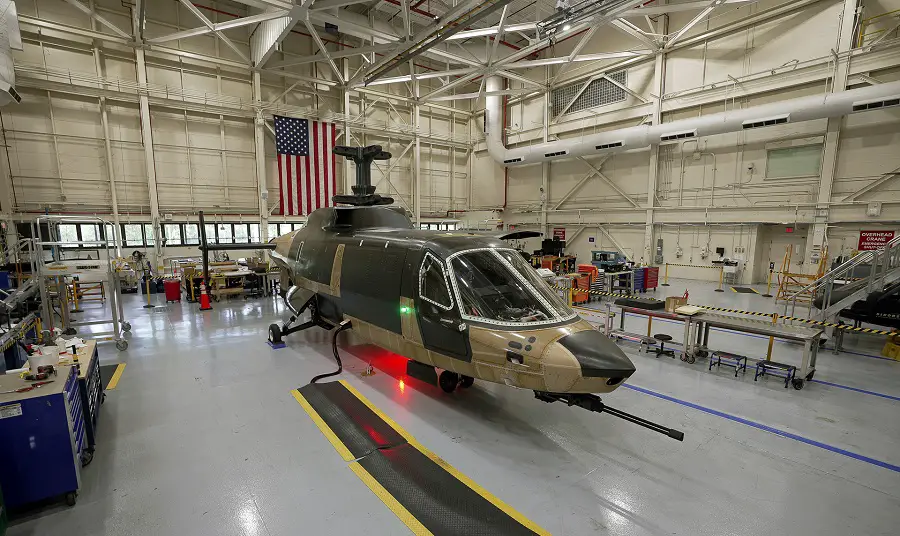Sikorsky, a Lockheed Martin company (NYSE: LMT) is completing early tests toward a safe flight test program for the RAIDER X® competitive prototype it is building for the U.S. Army’s Future Attack Reconnaissance Aircraft (FARA) program. There are hundreds of additively manufactured parts installed on RAIDER X, including flight-critical parts. The 3D printing process has been so successful that first articles are 95% compliant, saving the team hundreds of hours compared to previous processes. Sikorsky is also making progress on the second RAIDER X prototype, which is integrated into the team’s structural test program and will validate the flight and ground loads capability of the airframe. Structural testing is in progress and is expected to be complete by the end of the year.
“The FARA program is important for Army modernization because it provides the speed, maneuverability, reach and the lethality needed on a 21st Century battlefield,” said Pete Germanowski, FARA Chief Engineer. “RAIDER X is also designed for growth. The modular open systems approach and digital backbone coupled with the mission system and sensors and communications capability give the Army a node to tie their battlefield network together and enhance the capabilities of the ground force in the process.”
“The RAIDER X prototype, which is 92% complete, draws on Lockheed Martin’s broad expertise in developing innovative weapons systems using the latest digital design and manufacturing techniques. These advancements will enable the Army to not only lower the acquisition cost, but also enable rapid, affordable upgrades to stay ahead of the evolving threat,” said Jay Macklin, director, Sikorsky Future Vertical Lift business development.

The tests inform safety-of-flight processes for the first RAIDER X competitive prototype. Once structural testing is complete, the second RAIDER X prototype will be a viable test asset, further reducing risk for Sikorsky’s FARA offering. Sikorsky, a Lockheed Martin company, introduces RAIDER X®, its concept for a fast, agile, survivable compound coaxial helicopter that will equip future aviators to address evolving peer and near-peer threats in the most difficult environments. RAIDER X is specifically designed as a prototype for the U.S. Army’s Future Attack Reconnaissance Aircraft (FARA) prototype competition, part of the service’s effort to revolutionize its enduring aircraft fleet as part of what is known as Future Vertical Lift. RAIDER X® draws on Lockheed Martin’s broad expertise in developing innovative systems using the latest digital design and manufacturing techniques.
Sikorsky Aircraft is an American aircraft manufacturer based in Stratford, Connecticut. It was established by aviation pioneer Igor Sikorsky in 1923 and was among the first companies to manufacture helicopters for civilian and military use. Previously owned by United Technologies Corporation, in November 2015 Sikorsky was sold to Lockheed Martin. Sikorsky’s main plant and administrative offices are located in Stratford, Connecticut, as is a large company-owned private heliport. Other Sikorsky facilities are in Trumbull, Shelton, and Bridgeport, Connecticut (with small company heliport; Fort Worth, Texas; West Palm Beach, Florida; and Huntsville and Troy, Alabama. Sikorsky-owned subsidiaries are in Grand Prairie, Texas, and elsewhere around the world.















